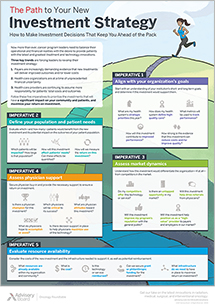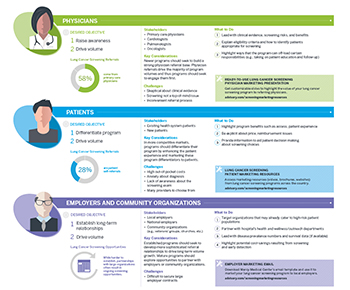Auto logout in seconds.
Continue LogoutElectronic cigarettes are widely marketed to help adults quit using traditional cigarettes, but little is known about their long-term health effects, particularly for people who've never smoked tobacco.
That gap in research has public school officials concerned about the recent surge in vaping among school-age children.
How Juul became a 'teen status symbol'
E-cigarettes have been sold in the United States for at least a decade. Federal law prohibits retailers from selling e-cigarettes to anyone under age 18, and some e-cigarette companies, such as Juul, have imposed 21-year old age limits for online purchases.
Despite the restrictions, e-cigarette use—or vaping—among school-age children has become more common. According to the 2017 Monitoring the Future survey, 11% of 12th graders, 8.5% of 10th graders, and 3.5% of 8th graders said they had vaped within the past 30 days. Of those 12th graders, 24% said they vaped daily, according to Richard Miech, lead author on the report and a professor at the Institute for Social Research at the University of Michigan.
Public school officials say a new generation of devices that resemble flash drives and other everyday items began making their way into public school systems last fall, and, according to the Wall Street Journal, have come to serve as a "teen status symbol."
These newer versions come in a wide variety of flavors that public health experts say appeal to youth, such as mango and crème brulee, and are smaller and easier to conceal. For instance, Juul makes an e-cigarette that is small and can be plugged in to a computer's USB port to charge.
Ashley Gould, the chief administrative officer for Juul, said the company's products are not intended for children but rather for adults who want to quit smoking. She said, "Our product is not only not for kids, it's not for non-nicotine users."
E-cigarettes' health effects remain unknown
Despite the surging popularity of e-cigarettes, public health experts say little is known about the health effects of long-term use, particularly among nonsmokers.
The National Academies of Sciences, Engineering, and Medicine (NASEM) in a January report found that e-cigarettes contain numerous potentially toxic chemicals, but that they contain fewer toxic chemicals than conventional cigarettes, and the chemicals are present in lower levels.
But school and public health officials warn that the pods in vaping devices contain higher concentrations of nicotine than conventional cigarettes. For example, Juul e-cigarettes contain a liquid with a 5% nicotine concentration, which according to the Journal is comparable to the amount of nicotine in a pack of traditional cigarettes, or 200 puffs.
While the NASEM researchers found "moderate evidence ... that more frequent use of e-cigarettes is associated with increased likelihood of cessation" among existing smokers, they also found "substantial" evidence that e-cigarette use among young users correlates with traditional tobacco use later in life.
Mark Rubinstein, a professor of pediatrics at the University of California, San Francisco, said, "We just don't know what the risks of inhaling all these flavorings and dyes are, and what we do know is already pretty scary."
For instance, a study published in March in the journal Pediatrics found that the urine of teenagers who use e-cigarettes contained significantly increased levels of five carcinogenic compounds.
How schools are fighting back
The rise in vaping has caused some public school systems to take new approaches to enforce their no smoking and vaping policies.
For instance, Oak Ridge High School in California shut down all but two of its bathrooms during classes in November 2017 and had monitors stand outside the doors to prevent students from congregating in the bathrooms. Other schools, such as New Trier High School in Illinois and Grace Church School in New York, are considering installing vaping sensors in bathrooms. Further, some schools to require repeat violators to undergo treatment or counseling.
Liz Blackwell, a school nurse in the Boulder Valley School District in Colorado, said of some students who vape, "They don't want to be kicked out of school, they don't want to suffer any punishment or discipline, and they don't want to have a bad relationship with their parents. They continue to use because it's an addiction."
Gould said Juul is working with schools on a curriculum that teaches mindfulness exercises to help students relieve stress and is looking at potential technologies that could disable their products on school grounds.
However, some public health experts have said tobacco companies, such as Philip Morris, tried similar programs that were not successful. Jennifer Kovarik, who heads tobacco prevention programs for Boulder County, Colorado, said, "If they didn't want youth to use it, it would be sold in 18-and-over-only establishments. It's available at Circle K's across the country" (Zernike, New York Times, 4/2; Chaker, Wall Street Journal, 4/2).
How to get the word out about lung cancer screening
Ten million individuals nationwide are eligible for lung screening every year—but the average program only screens about 25. Given its potential to increase survival and volumes, lung cancer screening is one of the best opportunities to achieve program cost, quality, and growth goals.
Early adopters, however, are finding it challenging to market the program to patients and primary care providers. Download this infographic to learn how to reach them—and grow your screening program.
Don't miss out on the latest Advisory Board insights
Create your free account to access 1 resource, including the latest research and webinars.
Want access without creating an account?
You have 1 free members-only resource remaining this month.
1 free members-only resources remaining
1 free members-only resources remaining
You've reached your limit of free insights
Become a member to access all of Advisory Board's resources, events, and experts
Never miss out on the latest innovative health care content tailored to you.
Benefits include:
You've reached your limit of free insights
Become a member to access all of Advisory Board's resources, events, and experts
Never miss out on the latest innovative health care content tailored to you.
Benefits include:
This content is available through your Curated Research partnership with Advisory Board. Click on ‘view this resource’ to read the full piece
Email ask@advisory.com to learn more
Click on ‘Become a Member’ to learn about the benefits of a Full-Access partnership with Advisory Board
Never miss out on the latest innovative health care content tailored to you.
Benefits Include:
This is for members only. Learn more.
Click on ‘Become a Member’ to learn about the benefits of a Full-Access partnership with Advisory Board
Never miss out on the latest innovative health care content tailored to you.


